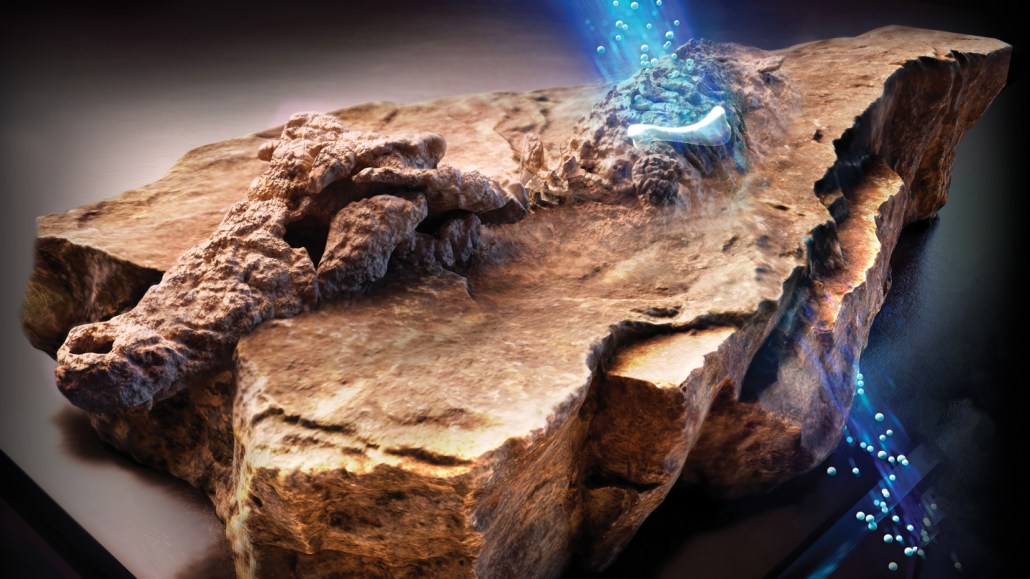Questions for ‘Neutrons are unveiling hidden secrets of fossils and artifacts’

This artist’s illustration imagines a beam of neutrons uncovering a hidden bone — part of an ancient fossil embedded in rock.
Natasha Mutch/SayoStudio
Share this:
- Share via email (Opens in new window) Email
- Click to share on Facebook (Opens in new window) Facebook
- Click to share on X (Opens in new window) X
- Click to share on Pinterest (Opens in new window) Pinterest
- Click to share on Reddit (Opens in new window) Reddit
- Share to Google Classroom (Opens in new window) Google Classroom
- Click to print (Opens in new window) Print
To accompany ‘Neutrons are unveiling hidden secrets of fossils and artifacts‘
SCIENCE
Before Reading:
- Doctors often use X-rays to check for broken bones or other injuries inside patients’ bodies. But X-rays can help us look inside other objects, too. Read this short description of X-rays and how doctors use them to peer inside people’s bodies. What allows X-rays to pick out different features inside the body? Based on that information, what other types of objects do you think X-rays might be useful for imaging? Describe which features inside those objects X-rays might be able to pick out, and why.
- Another technique for imaging the insides of objects involves sending neutrons, a type of subatomic particle, through objects. Read this short description of neutrons. How are neutrons different from X-rays? Why might images made with neutrons look different than those made with X-rays?
During Reading:
- Why was Matt White’s team unable to see the dinosaur bones inside their crocodile fossil at first? What allowed the researchers to finally see the details?
- How long have people been using neutrons to image the insides of objects?
- X-rays have recently helped researchers examine a variety of ancient artifacts. Name two examples.
- What sorts of materials do X-rays have a hard time imaging?
- X-rays and neutrons both image objects by interacting with the atoms inside of them. But neutrons and X-rays interact with those atoms differently. Explain how.
- What does Joseph Bevitt mean when he says that “water to neutrons is like lead for X-rays”?
- How do Jacob LaManna’s lilies demonstrate the differences between imaging with X-rays versus neutrons?
- Why was James Clark unable to see inside his sediment-covered crocodile fossils with X-rays? How did neutrons solve this problem?
- Why is Ariel O’Connor hesitant to image the Smithsonian’s ancient artifacts with neutrons? What test did her team run to address this concern?
- How long do objects typically remain radioactive after neutron imaging?
- What roadblocks stand in the way of more researchers using neutron imaging to study ancient artifacts and fossils?
After Reading:
- Imagine you had your own neutron-imaging device and you knew how to interpret its data. What kind of objects would you scan with your machine? What might images from those objects help you learn? Use examples from the story to back up your explanations.